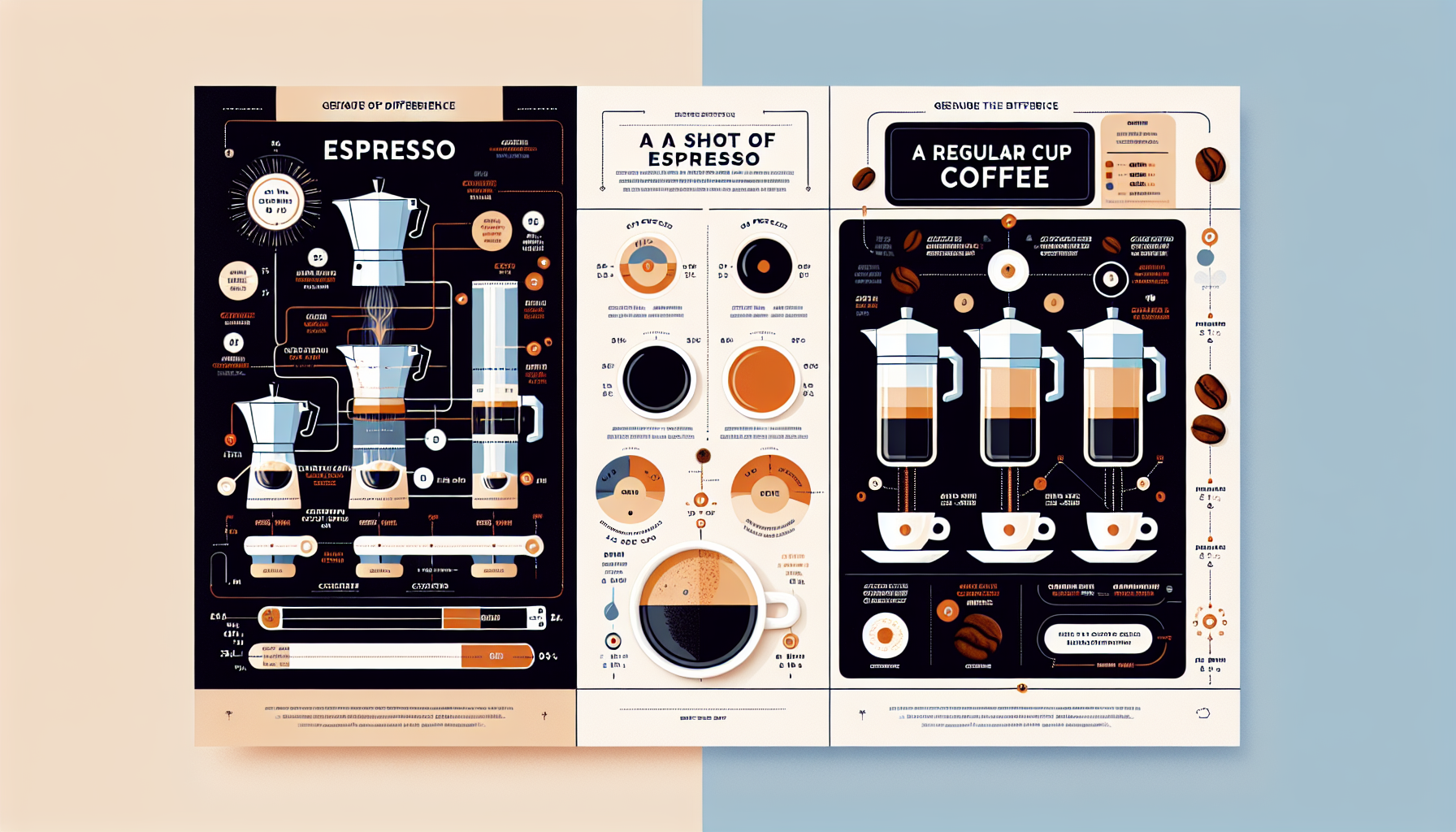You’re about to discover the perfect answer to a question many coffee enthusiasts have pondered: How much coffee is actually in a shot of espresso? Whether you’re a devoted espresso drinker or simply curious about the world of coffee, this article will reveal the fascinating details behind the composition of that beloved, intense shot of caffeine. Prepare to be amazed by the science and precision behind crafting the perfect cup of espresso, as we unravel the mystery of just how much coffee goes into your favorite espresso shot.
How much coffee is a shot of espresso?
If you are a coffee lover, chances are you have come across the term “espresso” more than once. But have you ever wondered how much coffee actually goes into a shot of espresso? In this article, we will explore the world of espresso and delve into its fascinating details. From the size of a shot to the amount of coffee it contains, we will unravel the secrets behind this beloved and concentrated coffee beverage.

CHECK OUT ESPRESSO MACHINES ON AMAZON
What is espresso?
Before we can dive into the specifics of how much coffee is in a shot of espresso, it’s essential to understand what espresso is. Espresso is a method of brewing coffee that originated in Italy. It involves forcing hot water through finely ground coffee beans under high pressure, resulting in a concentrated, flavorful shot of coffee. The process of making espresso creates a unique balance of flavors, with elements of sweetness, bitterness, and acidity all coming together in a single cup.
Size of a shot of espresso
When it comes to the size of a shot of espresso, you may be surprised to learn that it is much smaller than your average cup of coffee. A standard shot of espresso typically measures about 1 fluid ounce, which is roughly equivalent to 30 milliliters. This petite size allows for the intense flavors and aromas of the coffee to be concentrated into a sip-sized serving.
Amount of coffee in a shot of espresso
Now, let’s address the burning question: how much coffee is actually in a shot of espresso? Surprisingly, a single shot of espresso contains a relatively small amount of coffee. On average, a shot of espresso is made with about 7 grams of coffee beans. To put this into perspective, a typical cup of coffee uses around 18 to 20 grams of coffee grounds. So, while a shot of espresso may be small in size, it certainly packs a punch in terms of flavor and intensity.
Comparison with other coffee drinks
To fully understand the amount of coffee in a shot of espresso, it helps to compare it with other popular coffee drinks. For instance, a standard cup of brewed coffee typically contains anywhere from 100 to 150 milligrams of caffeine, depending on the strength and size of the serving. In contrast, a shot of espresso generally contains around 63 milligrams of caffeine. Despite the lower caffeine content, espresso is often perceived as providing a stronger kick due to its concentration and bold flavor profile.
Different types of espresso drinks
While a shot of espresso is a beloved beverage on its own, it also serves as the foundation for a variety of espresso-based drinks. These drinks take the concentrated shot and combine it with other ingredients to create a range of flavors and textures. Some popular examples include cappuccinos, lattes, macchiatos, and americanos. Each of these drinks has its own unique ratio of espresso to milk, resulting in a diverse array of coffee experiences to suit different preferences.
Espresso shot variations
In addition to the standard single shot of espresso, various shot variations have emerged over time. These variations offer different flavor profiles and strengths, catering to a wide range of coffee enthusiasts. Here are a few examples:
-
Ristretto: This is a shorter, more concentrated shot of espresso made with the same amount of coffee but less water, resulting in a bolder flavor profile.
-
Lungo: On the opposite end of the spectrum, a lungo is made by allowing more water to flow through the coffee grounds, producing a milder and slightly more diluted shot.
-
Double Shot: As the name suggests, a double shot of espresso is made by doubling the amount of coffee grounds and water, resulting in a stronger and larger serving.
Caffeine content in a shot of espresso
While espresso is known for its robust flavor, it is often wrongly associated with having a significantly higher caffeine content compared to other coffee drinks. In reality, a shot of espresso contains only slightly less caffeine than a standard cup of brewed coffee. The misconception arises from the concentrated nature of espresso, which makes it feel more potent. It’s worth noting that caffeine content can vary depending on factors such as the type of coffee beans used and the brewing process.
Factors affecting coffee amount in espresso
Several factors can influence the amount of coffee used in a shot of espresso. Firstly, the grind size plays a crucial role in determining the coffee-to-water ratio. Finely ground coffee allows for a more optimum extraction, resulting in a stronger and more flavorful shot. Additionally, the brewing time and pressure utilized in the espresso machine can also affect the overall coffee-to-water ratio. Adjusting these variables can help achieve the perfect balance of flavors in an espresso shot.
CHECK OUT ESPRESSO MACHINES ON AMAZON
How to make a perfect shot of espresso
Making a perfect shot of espresso is both an art and a science. While the process can vary slightly depending on the equipment and technique used, here are some general tips:
-
Start with freshly roasted and properly stored coffee beans. The quality of the beans greatly impacts the flavor of the espresso.
-
Grind the coffee beans to a fine consistency, similar to table salt. This ensures optimal extraction and prevents under or over-extraction.
-
Preheat your espresso machine and ensure all components are clean and free from residue.
-
Measure the appropriate amount of coffee grounds for a single shot, approximately 7 grams.
-
Distribute the coffee grounds evenly in the portafilter and tamp them down with consistent pressure. This step helps achieve proper water flow and extraction.
-
Attach the portafilter to the espresso machine, start the extraction process, and monitor the flow to ensure steady and consistent extraction.
-
Aim for a total extraction time of around 25 to 30 seconds, resulting in a shot that showcases a well-balanced flavor profile.
Health effects of drinking espresso
Like any other beverage, espresso comes with its own set of health effects. When consumed in moderation, espresso can provide several benefits. The caffeine in espresso can increase alertness and improve cognitive function. It may also boost metabolism and enhance physical performance. However, it’s important to keep in mind that excessive consumption of espresso or any caffeinated beverage can lead to negative effects such as sleep disturbances, increased heart rate, and digestive issues. As with most things in life, balance and moderation are key.
In conclusion, a shot of espresso may be small in size, but it contains a concentrated amount of coffee and flavors. It serves as the foundation for various espresso-based drinks and offers a unique coffee experience. Whether you enjoy it on its own or as part of a delicious latte, espresso is undeniably a beloved beverage among coffee enthusiasts. So next time you savor a shot of espresso, you’ll have a deeper appreciation for the meticulous craftsmanship and science behind this little cup of caffeinated bliss.

